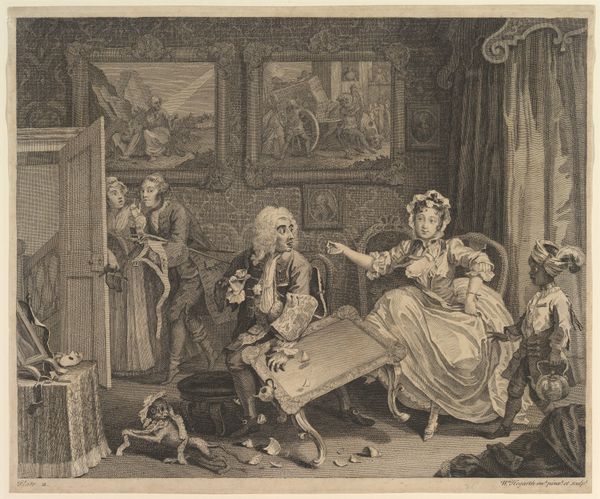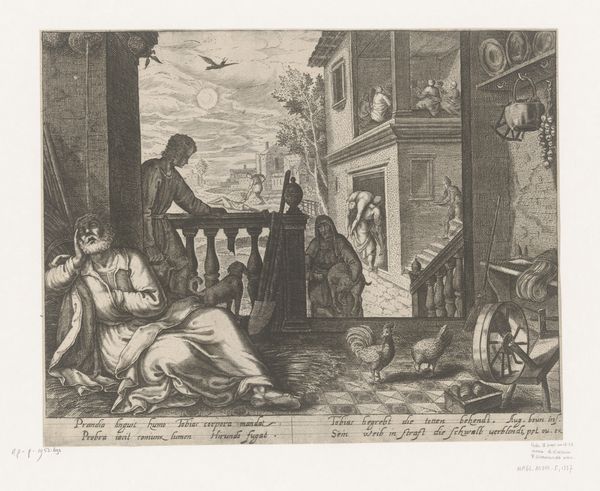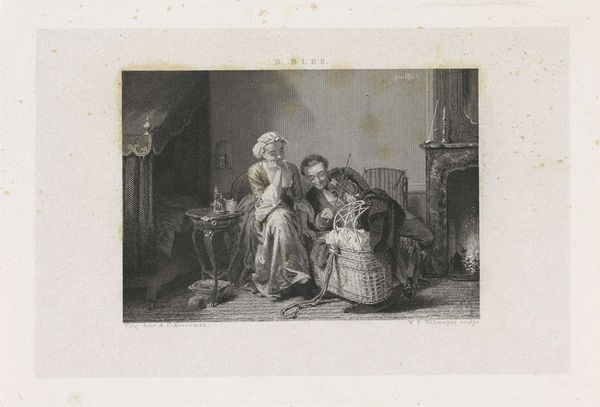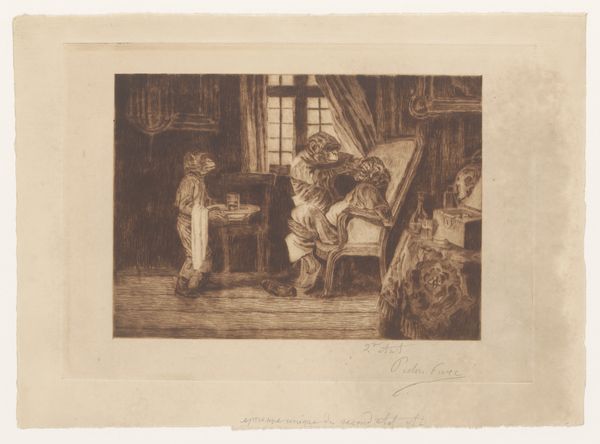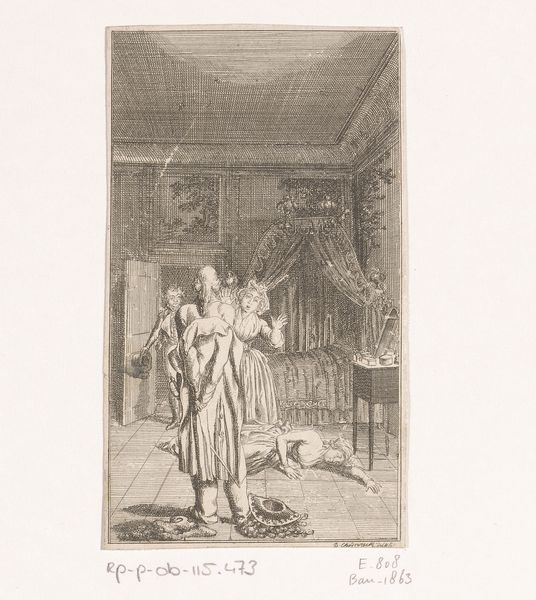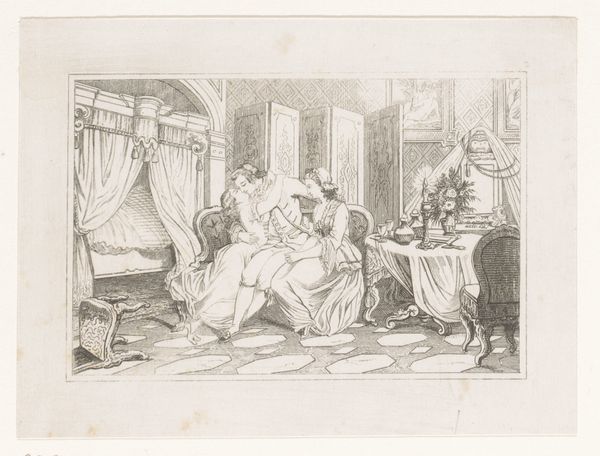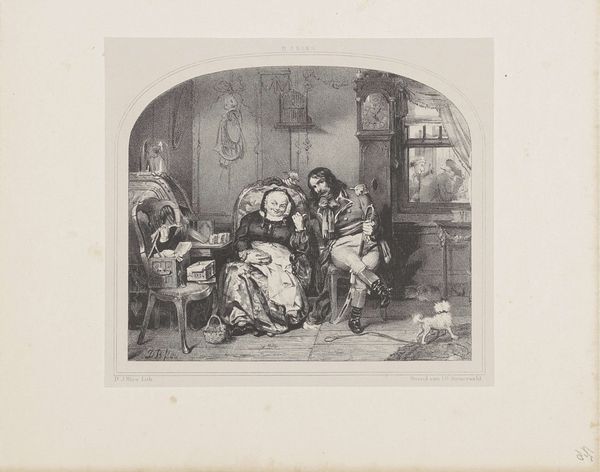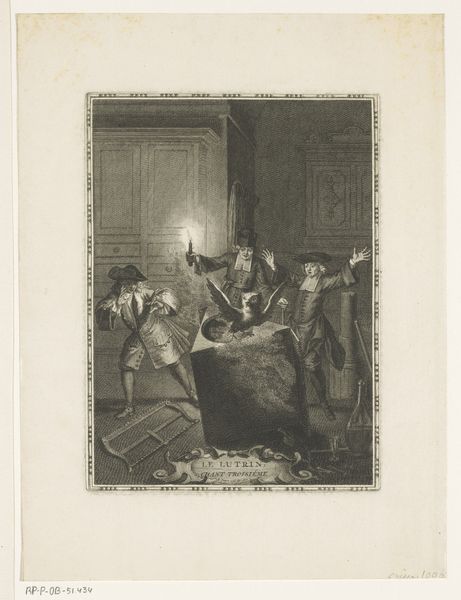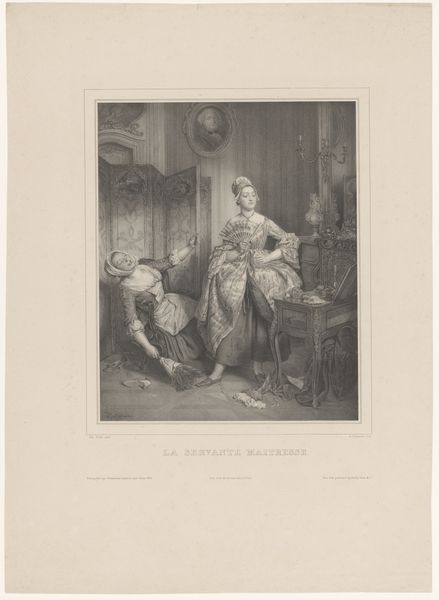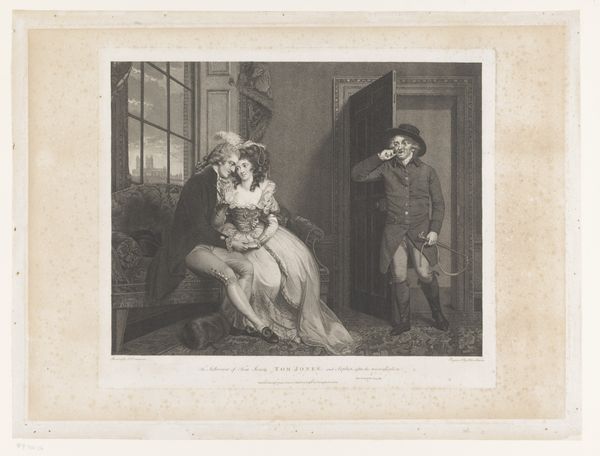
The Lover, from the Seven Ages of Man (Shakespeare, As You Like It, Act 2, scene 7) 1825 - 1840
0:00
0:00
drawing, print, engraving
#
portrait
#
drawing
# print
#
figuration
#
romanticism
#
men
#
history-painting
#
engraving
Dimensions: Sheet: 3 7/16 × 2 9/16 in. (8.8 × 6.5 cm)
Copyright: Public Domain
Curator: Charles Heath the elder created this engraving sometime between 1825 and 1840. It’s titled “The Lover, from the Seven Ages of Man," and it illustrates a passage from Shakespeare’s "As You Like It." Editor: Melancholy. That’s the first word that comes to mind. The posture, the downcast eyes, even the tones used in the printmaking – everything converges on this feeling. Curator: Absolutely. Heath captures the lovelorn character beautifully, slumped at his writing desk, presumably composing a sonnet. Consider the materials he used – engraving, a process involving meticulously carving into a metal plate, allowing for mass production. What does that say about the commodification of romantic sentiment in this era? Editor: The beauty emerges from the balanced composition. See how Heath uses the table as a horizontal anchor? It bisects the space, counterweighted by the vertical thrust of the window and the coat draped on the chair. Then the eye dances between those paintings on the wall. Curator: And those paintings depict Cupid figures, almost mocking the lovesick character below, no? Let's think about the social context of printmaking then; these images, disseminated widely, would've contributed to a shared understanding of the ideal, or perhaps satirical, version of courtship. How does access to print media impact class, romance, labor? Editor: Perhaps, but look again. It is that feathery softness of the caped coat contrasted with the angular lines of the desk. This elevates it, drawing a formal unity between all the objects. The artist uses those tonal relationships to reinforce this sense of languid despair. Curator: Right, so think about the artist's labor here - a skilled artisan meticulously producing this image for consumption by a burgeoning middle class. What impact would repeated images like these have had on courtship traditions, gift giving rituals, the rise of commodity culture? Editor: It shows us how line and form coalesce to conjure a very specific, persistent mood: sorrow and lost idealism. Curator: It also reveals how cultural narratives get disseminated, remixed and reimagined within evolving socio-economic fabrics.
Comments
No comments
Be the first to comment and join the conversation on the ultimate creative platform.
